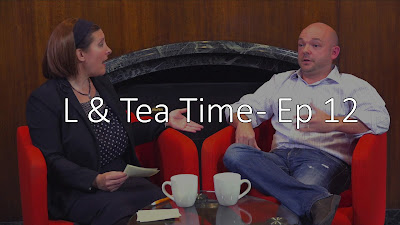Evicting Tenants for Short-Term Leasing Violations
November 24, 2015
I. INTRODUCTION
This blog post mirrors a booklet that was produced for a LandlordsNY presentation and focuses on how to evict tenants in multiple dwellings for violations of the relatively new laws prohibiting short-term leasing. The booklet is not, however, a bad resource for tenants and/or people who want to be “guests” in New York City via a short-term leasing platform because it educates people about what is and is not legal. I kept my personal opinions on the prohibitions against short-term leasing and the politics surrounding it out it out of the booklet. (Really!) There is a whole lot of law here, so let’s get down to business.
II. THE SHORT TERM LEASING LAW – WHAT EXACTLY IS PROHIBITED?
There still seems to be a great deal of confusion surrounding the prohibition in New York City against short-term leasing. Let us demystify what can and cannot be done, by starting with the relevant statutes – the New York State Multiple Dwelling Law (“MDL”) and the New York City Housing Maintenance Code (“HMC”).
A. The Statutes (n1)
A “multiple dwelling” is a dwelling which is rented as the residence or home of three or more families living independently of each other.(n2) Therefore, because the prohibition on short-term leasing is codified in the definitions section of the MDL, it applies only to buildings that legally have three or more units. MDL § 4(8)(a) is the relevant section of the statute and we need to read it closely.
Multiple Dwelling Law § 4(8)(a):
A “class A” multiple dwelling is a multiple dwelling [3 units] that is occupied for permanent residence purposes…A class A multiple dwelling shall only be used for permanent residence purposes. For the purposes of this definition, “permanent residence purposes” shall consist of occupancy of a dwelling unit by the same natural person or family for thirty consecutive days or more and a person or family so occupying a dwelling unit shall be referred to herein as the permanent occupants of such dwelling unit. The following uses of a dwelling unit by the permanent occupants thereof shall not be deemed to be inconsistent with the occupancy of such dwelling unit for permanent residence purposes:
(1)(A) occupancy of such dwelling unit for fewer than thirty consecutive days by other natural persons living within the household of the permanent occupant such as house guests or lawful boarders, roomers or lodgers; or (B) incidental and occasional occupancy of such dwelling unit for fewer than thirty consecutive days by other natural persons when the permanent occupants are temporarily absent for personal reasons such as vacation or medical treatment, provided that there is no monetary compensation paid to the permanent occupants for such occupancy.
[Emphasis supplied.]
Next, we need to make sure that we understand what the statute means by “lawful boarders, roomers or lodgers”. MDL § 4(5) defines “Lawful boarders, roomers or lodgers” as “a person living within the household who pays a consideration for such residence and does not occupy such space within the household as an incident of employment therein.” That definition still leaves us with some questions, for example: How many lawful boarders, roomers or lodgers can you have and still be ok under MDL § 4(8)(a)? And what does “living within a household” mean? For these answers we need to turn to the New York City Housing Maintenance Code (“HMC”) and the administrative decisions interpreting it.
The HMC applies to all dwellings.(n3) Under HMC § 27-2004(14), an “Apartment shall mean one or more living rooms, arranged to be occupied as a unit separate from all other rooms within a dwelling, with lawful sanitary facilities and a lawful kitchen or kitchenette for the exclusive use of the family residing in such unit.” Under HMC § 27-2004(4), a “family” is:
(a) A single person occupying a dwelling unit and maintaining a common household with not more than two boarders, roomers or lodgers; or
(b) Two or more persons related by blood, adoption, legal guardianship, marriage or domestic partnership; occupying a dwelling unit and maintaining a common household with not more than two boarders, roomers or lodgers; or
(c) Not more than three unrelated persons occupying a dwelling unit and maintaining a common household; or…
Moreover, under HMC § 27-2078, “a family may rent one or more rooms in an apartment to not more than two boarders, roomers or lodgers, and a rental to more than two boarders, roomers, or lodgers constitutes an unlawful use as a rooming unit”.
In NYC v. Carrey(n4), the Environmental Control Board (“ECB”) held that in an apartment with two roommates, when one roommate went away and rented his room to two (2) tourists for less than thirty days, that this constituted the guests, “living within the household of the permanent occupant”. This works in light of the above statutes. The roommates were a “family” according to the HMC (not more than three unrelated persons occupying a dwelling unit and maintaining a common household) with not more than two lodgers.
Although see NYC v. 488 West 57th Associates(n5), where the ECB held that in an apartment with two roommates, when they rented parts of the apartment simultaneously to four (4) tourists for less than thirty days, that this did NOT constitute, “living within the household of the permanent occupant”. Four boarders were two too many and, thus, the apartment was being improperly utilized as an unlawful rooming unit.
B. The Bottom Line – What You Can and Cannot Do
Therefore, it is only permissible for not more than two guests to stay within the household of a permanent occupant of a multiple dwelling for less than 30 days under two circumstances:
(1) If the guest is (or two guests are) “living within the household of the permanent occupant”. For example, this could encompass the classic bed and breakfast gig, where a guest lives with the permanent occupant for a few days.
(2) Or if the permanent occupant is temporarily away and the guest does NOT pay. For example, if the tenant is on vacation for a week and lets her cousin stay in the apartment and does not take any money for the favor, then there is no violation of the short-term leasing law.
Stated another way, it is NOT permissible in an apartment located in a New York City multiple dwelling to have a paying guest or guests for less than thirty (30) days when:
(1) no permanent resident is present in the apartment; or
(2) the guests number three or more.
C. Rent Stabilized Tenants Have Further Prohibitions Against Short-Term Leasing
When an apartment is Rent Stabilized, using it as a hotel room and profiteering off it is an incurable ground for eviction, as it undermines a purpose of the Rent Stabilization Code. In Bpark v. Durena(n6), Judge Lau held that the tenant had “engaged in profiteering by renting out the apartment or allowing his children to rent out the apartment, to a series of short-term transient tenants for commercial purposes on Airbnb.” The court explained that, “[s]uch brazen and commercial exploitation of a Rent Stabilized apartment significantly undermines the purpose and integrity of the Rent Stabilization Law and Code and is therefore incurable.”
D. Do NOT Confuse Short Term Leasing with a Tenant’s Right to a Roommate or to Sublet
Nothing protects a tenant’s right to do short-term leasing in the way that a tenant’s right to a roommate or a subtenant is protected by other statutes. Under certain very specific circumstances, a residential tenant has the right to a roommate and/or to sublet his or her apartment. These topics were covered in detail in my last booklet crafted for LandlordsNY entitled, “THERE ARE TOO MANY PEOPLE IN THAT APARTMENT! Who, besides the tenant on the lease, has a right to be in an apartment and for how long?”(n7)
Neither the right to a roommate nor the right to sublet, however, exists when the terms is for less than thirty days. The prohibition on short-term leasing trumps the roommate law or the sublet law by defining who may occupy a Multiple Dwelling. In 3357 LLC v. Stelle(n8), tenant had rented her three-bedroom apartment to over 100 guests from all over the world for two-and-one-half times the rent, and gave each of these guests the access code for the front door of the building. Tenant claimed she did not illegally sublet the apartment, but that she needed help making the $2,700.00 rent and these 100 folks were her “temporary roommates”. The court held that the 100 guests could not be roommates because they stayed for less than 30 days.
QUIZ! As bad as the below might sound, why does it NOT violate the short-term leasing law?
ANSWER: Because the building in question is a one-family home, not a multiple dwelling.
III. WHY SHOULD LANDLORDS CARE IF THEIR TENANTS ARE ENGAGING IN ILLEGAL SHORT TERM LEASING?
A. Potential Liability
As of this writing in November 2015, there are no reported cases where a tenant sued a landlord because he or she was harmed in a multi-family building by another tenant’s short-term leasing guest. Depending on the factual circumstances of such a hypothetical occurrence, however, it is possible that a landlord would be liable.
In Bello v. Campus Realty LLC, 99 A.D.3d 638 (1st Dept. 2012), a multi-family building’s residents brought a premises security action against building’s owner after they were robbed by intruders. The appellate court held that genuine issues of material fact existed that precluded summary judgment in the tenants’ premises security action. The question the trial court needed to contemplate was whether the landlord breached its duty to take minimal security precautions to protect residents from foreseeable criminal acts by failing to remedy an allegedly broken lock on the building’s front door entrance, despite notice of the dangerous condition, and whether the robbery of the residents was foreseeable, given the evidence of prior crimes, including robberies in and around the building.
The appellate court made the same decision in Carmen P. by Maria P. v. PS & S Realty Corp., 259 A.D.2d 386 (1st dept., 1999) when a fourteen-year-old tenant brought negligence action against landlord for breaching his duty to take precautions against foreseeable criminal assaults on tenants after she was raped by an unknown assailant who forced his way into her apartment. There was evidence that intruders loitered in the hallways, committed robberies, assaults, and drug crimes in the building, and that tenants complained about lack of security.
I have had landlords report to me that their tenants are complaining repeatedly in writing to them about illegal short-term guests of other tenants loitering in the hallways and having raucous parties. The question remains open as to whether such a landlord would be liable if a tenant was harmed by a short-term leasing guest.
In NYC v. Lorimer LLC(n9), a tenant who rented four apartments in a multiple dwelling converted them to transient use, resulting in violations and fines. The landlord testified that he had no idea that the tenant had done this and it would have been impossible for him to access these apartments. The ECB did not find this testimony credible, because increased traffic in the building should have alerted landlord to the problem, and landlord did not show that he either physically or legally attempted to gain access and deal with the problem.
B. Possible DOB & ECB Violations
If the New York City Department of Buildings (“DOB”) inspects and finds that even one apartment is violating the short-term leasing law, then it can issue violations that result in fines to the landlord.
In NYC v. ECC Realty LLC(n10), the DOB issued violations against apartment 5B for being transiently occupied and classified the violations as “immediately hazardous”. The tenant apologized to the landlord and moved out immediately. Nevertheless, the landlord was stuck with the violations and fines.
In NYC v. JJNK Corp.(n11), DOB issued 12 violations notices based on transient occupancy of two apartments. In JJNK, the ECB held that:
Ignorance of the violations not a defense
According to Code Section 28-301.1, an “owner shall be responsible at all times to maintain the building and its facilities . .. in a safe and code-compliant manner.” The owner may not shift this responsibility to a tenant. See NYC v. Jasol Properties, Ltd. (ECB Appeal No. 0900192, October 29, 2009). Respondent, as the building’s owner, is ultimately responsible for keeping the property in a Code-compliant manner, even if its tenants caused the violating conditions and it had no knowledge of the tenants’ actions. See NYC v. Mosco Holding LLC (ECB Appeal No. 1500169, April 30, 20 15) (premises owner liable despite lack of knowledge that apartments in its premises were being used illegally for transient occupancy). Consequently, Respondent’s ignorance of its tenant’s short-term rental activities is not a defense.
IV. HOW CAN LANDLORDS TELL IF (AND PROVE THAT) THEIR TENANTS ARE ENGAGED IN ILLEGAL SHORT TERM LEASING?
For all of the reasons discussed above, a landlord needs to know if its tenants are violating the short-term leasing law. Once short-term leasing law violations are discovered, landlords also need to carefully document the infractions. If you want to win in Housing Court, you need proof, NOT innuendo.
A. Tips for Online Tracing
We did an amazing L & Tea Time with Michelle show on Evictions for Violations of the Short-Term Leasing Law with LandlordsNY member J.P. Rutigliano.(n12)
What follows is the transcript of an excerpt from the show where JP explains how he finds his tenants engaged in short-term leasing online.
MMI: How do you know if your tenants are short term rentals?
JPR: There are two ways mostly: either the neighbors complain because they’re not happy with the activity and the traffic in the building or by going to the website itself and just doing searches in the general area where these properties are.
MMI: So, how do you do that on [online]? Can you search by your building’s address?
JPR: Not specifically by the building’s address, but it’s got a mapping location, a little device where you can drill to the location where your buildings are located within that little circle?
***
JPR: You can drill down to that area. If you have a building there, you can get a little circle around your property, and then all the listings within that circle are gonna show up on the other side of the screen.
***
MMI: So what you’re seeing if it doesn’t have an address, then how do you know that it’s your building?
JPR: As an owner and a manager, you need to know what your apartments look like specifically. That’s how we know. We know our apartments well enough when we see pictures online, a few little details that we do that are different than other owners. There’s plenty of times when you’re looking and you see apartments that you think are yours that aren’t, but still, you’re going to check them out.
MMI: The host name – is that your tenant?
JPR: That’s how we confirm that that’s the person that’s doing it. So, if you’re looking, every listing has a host, and that’s usually the tenant of record that’s doing it. Once you see the pictures online, you see the host, and you check out who’s doing it. If that apartment matches up with somebody that’s listed on the lease, that’s how you know that’s your person.
Funny story — J.P. told us how he had a young woman for a tenant and her father was pleading for a rent reduction because the City is so expensive. J.P. says that she could not have been hurting too badly, because he found the tenant listing the apartment on a short-term leasing site for $300.00 per night!
B. Private Investigators
Good old fashion private investigation can be very useful in this area. I know one PI who books herself in to the target apartment, packs a bag, and goes and stays for a weekend pretending to be a tourist from France! She wears a hidden video camera and documents the entire experience.
C. Cameras
Moreover, properly installed and maintained hidden security cameras trained on the door of an apartment can also be an excellent tool in proving a tenant’s violation of the short-term leasing laws.
We recommend letting a professional install and maintain such equipment. Landlord’s counsel needs to work closely with the surveillance camera technologists to streamline both the technical and legal process involved with utilizing cameras, or the evidence obtained from the cameras might not be admissible. A videotape must be “authenticated” before it can be used as evidence in a court proceeding. It is, therefore, often helpful if someone actively monitors the recording, rather than allowing months of footage to build up before reviewing it.(n13) However, it is not absolutely necessary to monitor the video feed. Testimony from someone who has knowledge of the circumstances and who actually reviewed the footage is usually sufficient.(n14) Motion-activated cameras mean there is much less footage to review. Moreover, what used to make cameras cost a lot was not so much the camera, but its wiring. Today, there are wireless camera installations available.
D. Discovery of Tenant’s Email Relating to Short-Term Leasing
In a summary holdover proceeding there is no automatic entitlement to discovery, i.e. the exchange of documents before trial and depositions.(n15) In order to get discovery in a summary proceeding, a party must make a motion and demonstrate “ample need.”(n16)
It is entirely possible that if a landlord had some admissible evidence of tenant’s violation of the short-term leasing laws and if landlord made a tailored request for tenant’s email relating to short-term leasing activity over a clearly defined and relevant period of time, that a court could order tenant to turn over such electronically stored information. Strategically, many litigants dislike the idea of handing over any part of their email, so the request alone can have a powerful impact on the course of a litigation. Landlord may have evidence that tenant engaged in prohibited short-term leasing on a few occasions. Tenant may have evidence in their email, however, of tens or hundreds of such bookings. Tenant’s activities on social media in connection with short-term rental activity could also be subject to disclosure.
E. Other Tenants and Building Personnel
The testimony of onsite personnel and other tenants is crucial evidence in these cases.
In 42nd & 10th Assoc. LLC v Ikezi, 46 Misc.3d 1219(A) (Civ. Ct. NY Cty. 2015), the tenant effectively transformed his Rent Stabilized apartment into a luxurious lodging suite for those willing to pay a $649.00 nightly fare. The landlord uncovered a listing posted online that advertised the apartment as available for rent. The ad solicited guests who were interested in a lavish stay in Hell’s Kitchen. Potential guests agreed to pay tenant $649.00 per night, check-in before 4:00 p.m., check-out by 11:00 a.m., pay $95.00 per extra guest, and include a $150.00 cleaning fee. The landlord sent a written request to tenant demanding that he remove the ad and refrain from renting the property. Tenant refused. In response, the landlord commenced an action to terminate tenant’s lease agreement as a violation of the Rent Stabilization Law and to re-possess the apartment. At trial, the landlord called both its senior residential service specialist and the building concierge to testify. Each testified that tenant was rarely, if ever, seen in the building, and that overnight, non-family member guests were frequently seen on the premises. The building’s amenities manager also testified that tenant tried to convince her to allow his guest’s to have access to the gym, screening room, game room, business center and basketball court, which were off limits to guests without a tenant present. The landlord also submitted the pictures used to depict the apartment online, and the written contents contained in the ad, to solidify that tenant published the ad with the intent of collecting rental fees for the premises.
F. Question the Guests
As you can see from the fact patterns in the cases included throughout this article, sometimes the short-term guests are the best evidence possible that a tenant is engaged in short-term leasing. Owners, managers, and building personnel should readily ask strangers in the building, especially those with suitcases, who they are and why they are in the building. If the guest shows an online booking receipt, take a picture of it!
V. EVICTING TENANTS FOR ENGAGING IN ILLEGAL SHORT TERM LEASING
A. Summary Proceedings – Holdovers
If the proof amassed is solid, a summary proceeding to evict for violations of the short-term leasing law is relatively simple, when compared with other types of holdovers – such as non-primary residence cases. This is because there is no requirement for providing a cure period, and the case can begin with a notice of termination of tenancy, Brookford, LLC v. Penraat, 47 Misc3d 723 (S. Ct. NY Co. 2014), followed by a holdover proceeding.
B. Injunctions
Moreover, injunctive relief is also available to a landlord when a tenant violates the short term leasing laws. Penraat(n17) involved an action commenced by plaintiff-landlord against defendant-tenant, the resident of a four-bedroom, rent-controlled duplex apartment on Central Park West, arising out of tenant’s rental of three of the bedrooms to tourists and other transient visitors for profit on a short-term basis using a commercial website. Landlord was granted a preliminary injunction enjoining tenant from so renting the apartment where plaintiff demonstrated a likelihood of success on the merits of its claim that defendant’s activities were in violation of Multiple Dwelling Law § 4 (8) (a), and where the circumstances of such renting posed a danger to all occupants of the building the court stated:
As to whether plaintiff suffered from irreparable injury, case law has already set forth that placing tourists in accommodations that are not designed or equipped with sufficient fire and safety protections, in and of itself, constitutes irreparable injury, and the equities lie in favor of enjoining such conduct, “rather than in allowing said business to continue to operate (to defendants’ presumed financial advantage)”.
VI. PREVENTING TENANTS FROM ENGAGING IN ILLEGAL SHORT-TERM LEASING
It is better to prevent tenants from engaging in short-term leasing then to have to clean up the mess that short-term leasing creates.
A. Education of Tenants
Many people, tenants included, simply do not understand what is prohibited. Ownership and management should seek to educate the tenants through email memos and flyers. Tenants should be educated about the illegality of short-term leasing as well as the dangers to themselves and their fellow residents. Tenants should be encouraged to report other tenants who violate the short-term leasing law to management.
B. Adding a Specific Lease Clause
The Standard Form of Apartment Lease promulgated by the Real Estate Board of New York states the following in the “use” section:
The Apartment may be occupied by the tenant or tenants named above and by the immediate family of the tenant or tenants and by occupants as defined in and only in accordance with Real Property Law §235-f. [235-f is the “Roommate Law”, see above]
I recommend, however, that Landlords add a special section to the riders of their residential leases prohibiting short-term rentals. I am working with LandlordsNY to draft a residential lease form to offer to the membership. Below is a sample of the language contained in the Use Clause. Notice that “D” directly addresses the short-term leasing issue.
USE OF THE APARTMENT
(A) Tenants shall use the Apartment for living purposes only.
(B) Tenants shall not violate Real Property Law § 235(f) or similar statute, commonly known as “the Roommate Law”, which, among other things, prohibits the combined number of tenants and occupants to be more than the number of tenants on a lease.
(C) Tenants shall not violate New York City’s Administrative Code Section 27-2075 or similar statute, which, among other things, limits the number of people who may legally occupy an apartment of this size.
(D) Tenants shall not violate Multiple Dwelling Law § 4(8)(a) of similar statute, which, among other things, prohibits short-term leasing of an apartment.
(E) Tenants shall not violate Zoning Resolution of the City of New York § 12-10, which, among other things, proscribes the ability to carry on a business inside an apartment.
(F) Tenants shall not assign this Lease or sublet the Apartment without Landlord’s advance written consent in each instance to a request made by Tenant in the manner required by Real Property Law § 226-b or similar statute.
(G) There are ____ (#) Tenants in this Lease. There are ____ bedrooms in the Apartment. Landlord has and will have no involvement in the assigning of bedrooms within the Apartment to the Tenants. Each Tenant is a tenant of the entire Apartment.
Moreover, the lease can further curb a tenant’s right to engage in short-term leasing by clarifying that if a tenant violates that clause of the lease that he or she can be immediately terminated without the benefit of a cure period.
ACTION LIST
• Go back up to § I(B) and make sure you REALLY understand “What you can and can’t do.”
• Ask the super and building personnel if they have seen any behavior consistent with tenants violating the short-term leasing laws.
• Check your building online (as described in this booklet) to see if your building is being listed on any popular short-term leasing platforms.
• Send a memo to all tenants educating them on the short-term leasing law.
• Add a clause in your lease making it clear that short-term leasing is not allowed and that if a tenant engages in short-term leasing that no notice to cure is required.
ENDNOTES
(1) For those of you who are bored by the in-depth statutory analysis sections of my articles, skip to Section I(B) below.
(2) MDL § 4(7).
(3) N.Y. ADC. LAW § 27-2003.
(4) ECB Appeal Nos. 1300602 & 1300736, 9/26/2013.
(5) ECB Appeal No. 1400043, 3/27/2014, LVT No. 25476.
(6) 100145/2014, NYLJ 1202725492875, at *1 (Civ., Kl, Decided April1, 2015).
(7) http://www.itkowitz.com/booklets/THERE-ARE-TOO-MANY-PEOPLE-IN-THAT-APARTMENT-Who-besides-the-tenant-on-the-lease-has-a-right-to-be-in-an-apartment-and-for-how-long.pdf; or on Scribed at: https://www.scribd.com/doc/264956158/THERE-ARE-TOO-MANY-PEOPLE-IN-THAT-APARTMENT-Who-besides-the-tenant-on-the-lease-has-a-right-to-be-in-an-apartment-and-for-how-long
(8) LVT Number 26563, Index No. 77007/2011 NYLJ No. 1202736933498 (Civ. Ct. NY Cty. 8/6/2015, J. Saxe).
(9) ECB Appeal No. 1400672, September 18, 2014 (affirmed 11/20/2014 under Appeal No. 1401013.
(10) ECB Appeal No. 1400626, 8/28/ 2014.
(11) ECB Appeal Number 1500708, 9/25/15, LVT Number 26579.
(12) http://www.itkowitz.com/itkowitztv/lteatimewithmichelle12.
(13) See, e.g., People v. Fondal, 154 A.D.2d 476 (2d. Dep’t 1989). (Holding that there was an adequate foundation for the introduction of a videotape into evidence where an employee observed, through the medium of a closed-circuit television, defendants engaged in the commission of a theft, and testified that the videotape accurately depicted the events which he had observed.)
(14) See Zegarelli v. Hughes, 3 N.Y.3d 64, 69 (2004).
(15) CPLR § 408.
(16) Hartsdale Realty Co. v. Santos, 170 A.D.2d 260 (1st Dep’t 1991).
(17) 47 Misc3d 723 (S. Ct. NY Co. 2014).








